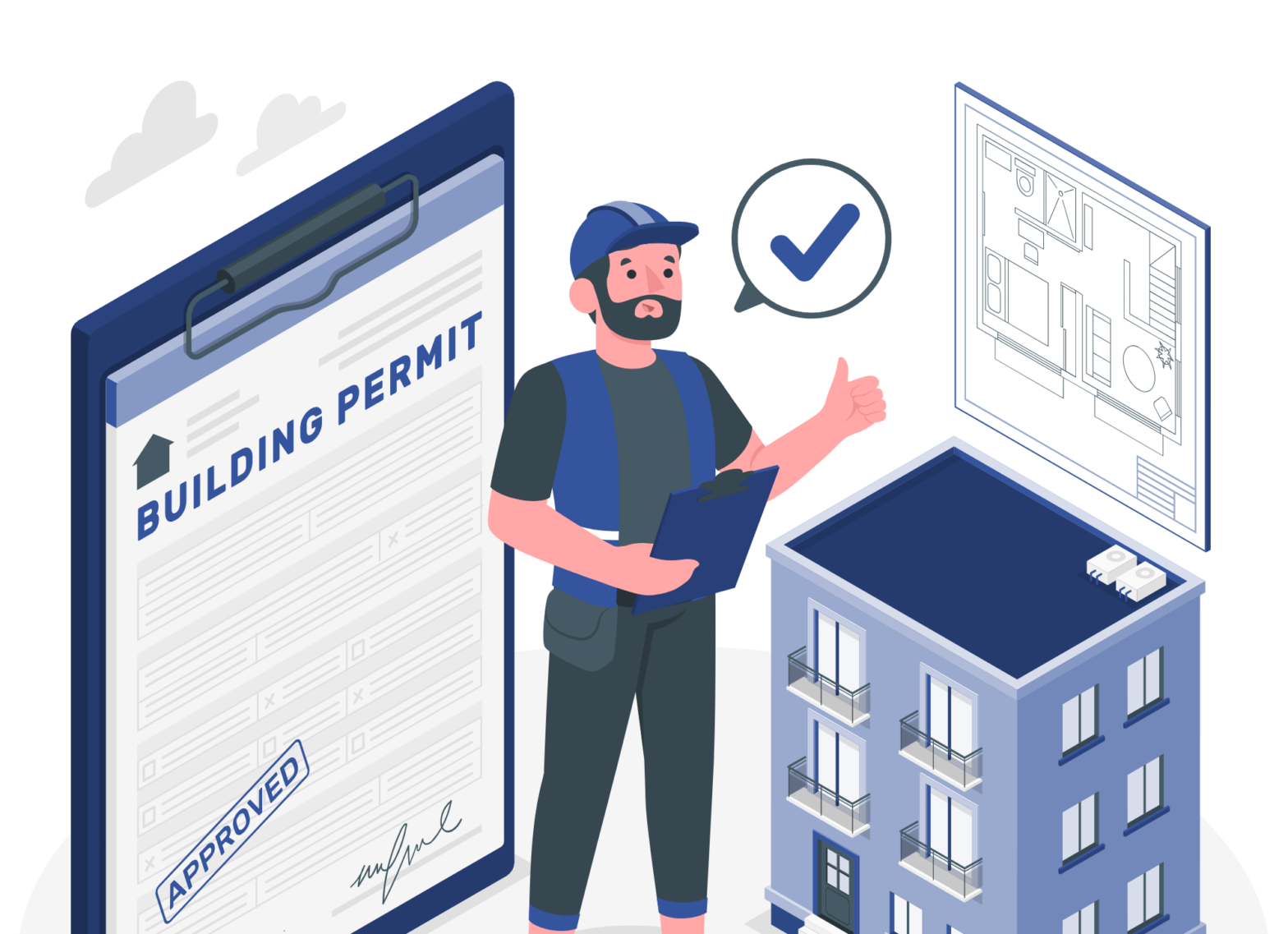Our Blog


Trekking through the landscape of high-rise building safety is no small task. These towering structures, often over 23 metres high and sometimes surpassing seven stories, carry unique challenges and complexities. With past tragedies like the Grenfell Tower fire fresh in our minds, ensuring rigorous safety regulations is more critical than ever for the safety of occupants and the peace of mind of all stakeholders.
Safety regulations in high-rise buildings aren’t just guidelines; they form the fundamental structure ensuring these buildings stand securely against hazards like fires, structural failures, and evacuation challenges. Since Grenfell, significant regulatory changes, such as the Building Safety Bill, have been introduced, bringing clarity, accountability, and enhanced safety management. These changes have ushering in a new era of building safety compliance, with platforms like MosaicGT leading the way in streamlining these processes.
High-rise buildings must be engineered to handle everything from heavy wind loads to potential seismic events. Meeting regulatory standards for structural performance is critical, especially as authorities worldwide tighten guidelines for taller, more complex constructions. In response, engineering innovations—such as high-strength steel frames, tuned mass dampers, and advanced finite element modelling—allow architects and engineers to predict and accommodate stresses accurately. These tools not only meet or exceed code requirements but also streamline the design approval process by providing transparent, data-driven evidence of a building’s structural resilience.
Building codes mandate the use of fire-resistant and safety-compliant materials, yet the market has evolved well beyond basic concrete and steel. Next-generation materials—including carbon fibre reinforcements, self-healing concrete, and innovative cladding systems—improve a building’s load-bearing capacity while reducing long-term maintenance costs. For instance, intumescent coatings on structural steel can expand in high temperatures, enhancing fire resistance and buying precious time for safe evacuation.
Moreover, smart materials with embedded sensors can detect micro-cracks or unusual stress patterns, instantly alerting facility managers to potential issues. This level of monitoring not only assures compliance with stringent standards like Eurocodes or local fire codes but also reduces the burden of manual inspections by providing continuous feedback on structural health.
Regular inspections are at the heart of any high-rise safety protocol, with regulatory bodies often requiring specific intervals for detailed structural reviews. However, traditional inspection methods—often involving extensive scaffolding or rope-access—can be time-consuming, costly, and risky. Here, technological breakthroughs step in:
Drone Surveillance: Unmanned aerial vehicles equipped with high-resolution cameras and thermal imaging can quickly evaluate façades, pinpointing issues such as loose cladding or damaged sealant. The resulting visual data is stored in centralised systems, making it easier to track compliance over time.
IoT and Sensor Networks: Connected sensors embedded in critical structural components continuously measure stress, vibration, or temperature changes. When irregularities are detected, automated alerts can prompt engineers to conduct further checks.
Digital Twin Technology: Platforms like MosaicGT, among others, enable the creation of real-time digital replicas of a building’s structural elements. Inspectors can tag problems directly onto a virtual model, facilitating smoother collaboration between stakeholders and simplifying compliance documentation.
By integrating these innovations, owners can demonstrate adherence to building regulations more efficiently. Detailed digital records help satisfy inspectors’ requirements for ongoing maintenance and provide a clear paper trail of corrective actions and upgrades, ensuring that high-rise developments remain both compliant and safe throughout their lifecycle.
A building’s façade is more than a visual statement—it forms a critical line of defence against weather, heat gain, and fire. Regulatory bodies often require stringent testing of cladding systems to ensure they meet standards for fire spread, thermal insulation, and structural integrity. For example, in many jurisdictions, façade materials must pass rigorous flame spread classifications or large-scale fire performance tests.
Material Innovations
Fire-Resistant Panels: Advanced composite panels often incorporate fire-retardant cores that minimise flame propagation. Coupled with intumescent coatings, these assemblies can significantly delay fire spread.
Self-Healing Coatings: Emerging in the market, these coatings can seal micro-cracks caused by thermal expansion or mechanical stress, prolonging the façade’s lifespan and reducing the risk of moisture intrusion.
Wind Tunnel Modeling: For high-rises, computational fluid dynamics (CFD) simulations or physical wind tunnel tests validate how the building’s envelope copes with high wind loads. Meeting regulatory benchmarks for cladding attachment and wind resistance ensures occupant safety and protects surrounding pedestrians from falling debris.
Thermal Bridging Analysis: Using parametric software, architects can model various insulation configurations to reduce thermal bridging. This ensures compliance with stricter energy codes and simultaneously maintains effective fire barriers.
Sensor-Embedded Façades: Some modern cladding systems integrate sensors that track moisture infiltration or temperature differentials, automatically flagging potential concerns. Over time, these smart façades facilitate proactive maintenance and provide digital records for regulatory reviews.
By combining state-of-the-art materials, parametric modelling, and real-time data, façade engineering and building envelope design can meet—and often exceed—stringent requirements for safety, energy performance, and occupant comfort.
Efficient evacuation is paramount in high-rise structures, where occupants rely heavily on stairwells and elevators for vertical transport. Building codes worldwide specify minimum stair widths, designated refuge floors, and smoke-proof enclosures to safeguard people during emergencies.
Positive Pressure Systems: Stairwell pressurisation prevents smoke from infiltrating escape routes, ensuring clear visibility and breathable air. Modern systems use variable-speed fans controlled by sensors to adjust pressure levels in real-time, aligning with code requirements for smoke management.
Compartmentation: Fire-rated doors and barriers isolate the spread of flames and smoke, buying critical time for occupants to evacuate. These barriers must be tested and certified to meet specific fire resistance standards.
Firefighter Elevators: Specially designed lifts remain functional during a fire, allowing emergency personnel to reach affected floors faster. They feature waterproof control panels, backup power sources, and enhanced shaft pressurisation.
Destination Dispatch Systems: By grouping passengers headed to similar floors, these intelligent systems streamline evacuation and can adapt evacuation protocols during emergencies, giving priority to lower floors or emergency services as needed.
Wayfinding Technology: Digital signage, integrated with building management systems, can direct occupants away from blocked corridors or stairwells.
Occupant Tracking: Wearable devices or smartphone apps can be used to confirm that individuals have vacated a particular floor, helping emergency personnel target areas where people might still be trapped.
Meeting evacuation regulations increasingly involves integrating IoT devices, advanced ventilation controls, and real-time monitoring. These innovations do more than check a compliance box—they create safer, more predictable pathways for occupants and emergency services alike.
Older high-rises often predate modern codes and were built with materials or designs that may no longer be compliant. Retrofitting is therefore crucial for bridging the gap between legacy conditions and current safety standards, particularly in terms of structural reinforcement and fire protection.
3D Laser Scanning: High-accuracy scans create digital twins of the building, highlighting irregularities or weakened areas. This data can be overlaid with code requirements to pinpoint exactly where interventions—such as installing fire-rated doors or reinforcing concrete columns—are needed.
Structural Health Monitoring (SHM): Permanent sensor networks measure vibration, strain, and other indicators to identify potential failures early. This proactive approach aligns with emerging regulations that emphasize ongoing building performance rather than one-time inspections.
Replacing Flammable Cladding: Many older towers still have combustible cladding systems. Retrofitting typically involves removing panels and insulating layers and replacing them with proven, tested assemblies that meet modern fire spread regulations.
Sprinkler Systems and Fire Alarms: Where older buildings may lack sprinklers, new legislation increasingly requires them, especially for residential towers. Wireless fire detection systems can be installed to reduce demolition and wiring costs during retrofits.
Seismic Retrofits: In regions prone to earthquakes, adding shear walls or external steel braces can prevent catastrophic collapse.
Green Retrofits: Upgrading glazing, insulation, and HVAC systems can simultaneously enhance fire safety (by using non-combustible insulation materials, for example) while meeting evolving sustainability criteria.
By focusing on a data-driven approach—employing digital twins, SHM, and robust documentation—building owners can efficiently navigate the permitting process for retrofits. This not only meets current codes but also extends the building’s lifespan.
High-rise building safety demands a multi-faceted approach that integrates cutting-edge technology with evolving regulations. From fortifying structural integrity through advanced materials and engineering solutions to smart façade design that withstands fire spread and energy demands, each layer of safety is interwoven with innovation. Pressurised stairwells, destination dispatch elevators, and real-time wayfinding systems create efficient, code-compliant evacuation plans. Meanwhile, retrofitting older properties using digital scans, Structural Health Monitoring, and fire-resistant replacements aligns legacy buildings with modern codes.
Collectively, these strategies emphasise a culture of proactive compliance—one where rigorous inspections, data-driven tools like MosaicGT, and collaborative workflows ensure long-term occupant protection. By embracing advanced engineering, real-time monitoring, and digital documentation, stakeholders can more readily meet regulatory requirements while shaping safer, more resilient urban skylines for years to come.

Your Home, Your Safety: A Vital Campaign for Building Safety In an ever-evolving world where safety concerns are paramount, ensuring the security of our homes becomes increasingly crucial. The UK government’s Health and Safety Executive (HSE) has launched an impactful campaign titled “Your Home, Your Safety,” aimed at empowering residents to take proactive measures towards… Continue reading Your Home, Your Safety: A Vital Campaign for Building Safety
read more
In recent years, the discourse around building safety has gained significant traction, particularly in the UK, following tragic incidents such as the Grenfell Tower fire. As part of ongoing efforts to enhance safety standards, the UK government has introduced the Building Safety Golden Thread initiative. This groundbreaking approach aims to establish a comprehensive framework for… Continue reading Unlocking the Golden Thread: Ensuring Safety in UK Buildings
read more
The Building Safety Act of 2022 stands as a landmark piece of legislation, representing a significant milestone in the ongoing quest for safer, more resilient built environments. To truly appreciate the impact of this act, it’s essential to delve into its history, tracing the evolution of building safety regulations and the critical events that paved… Continue reading The Evolution of Safety: the Building Safety Act of 2022
read more